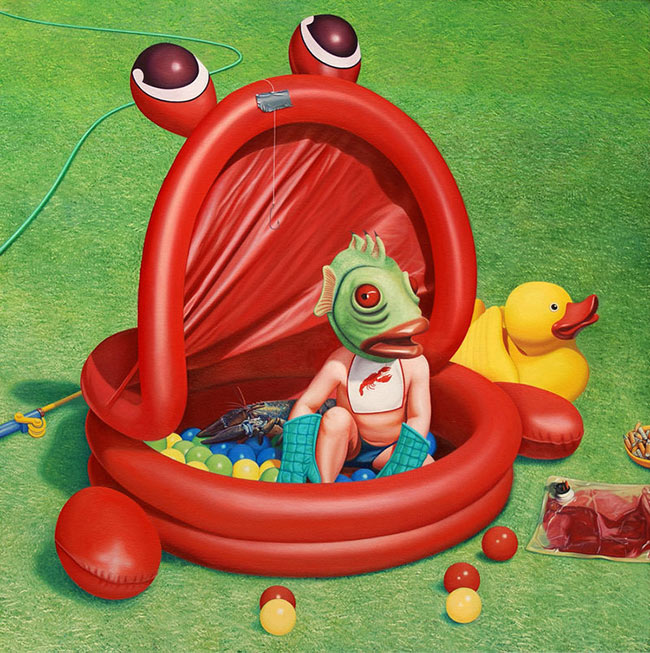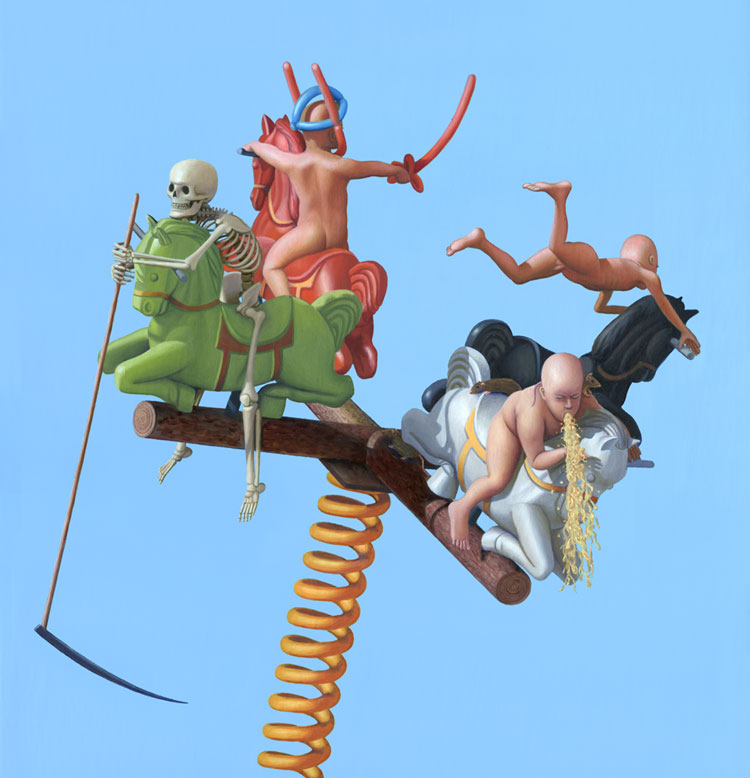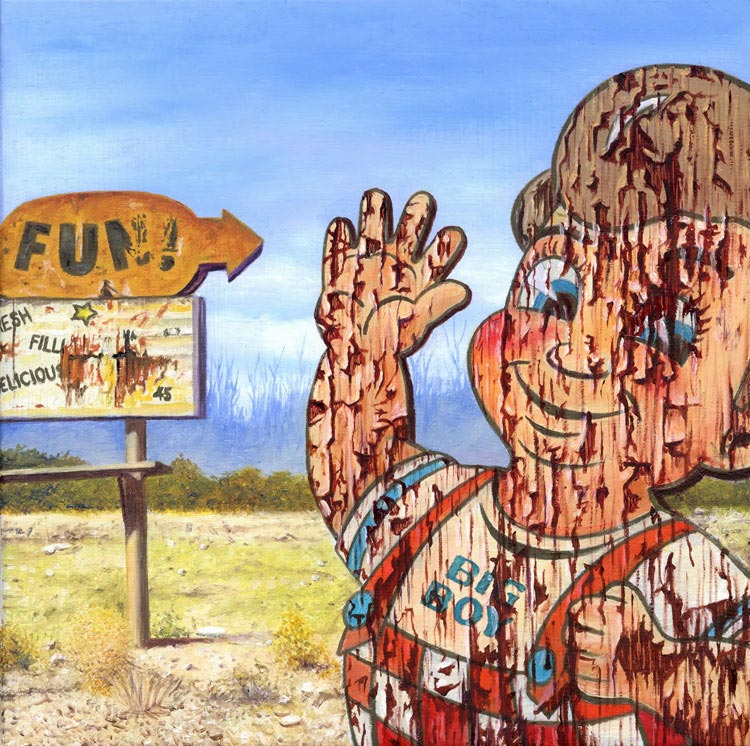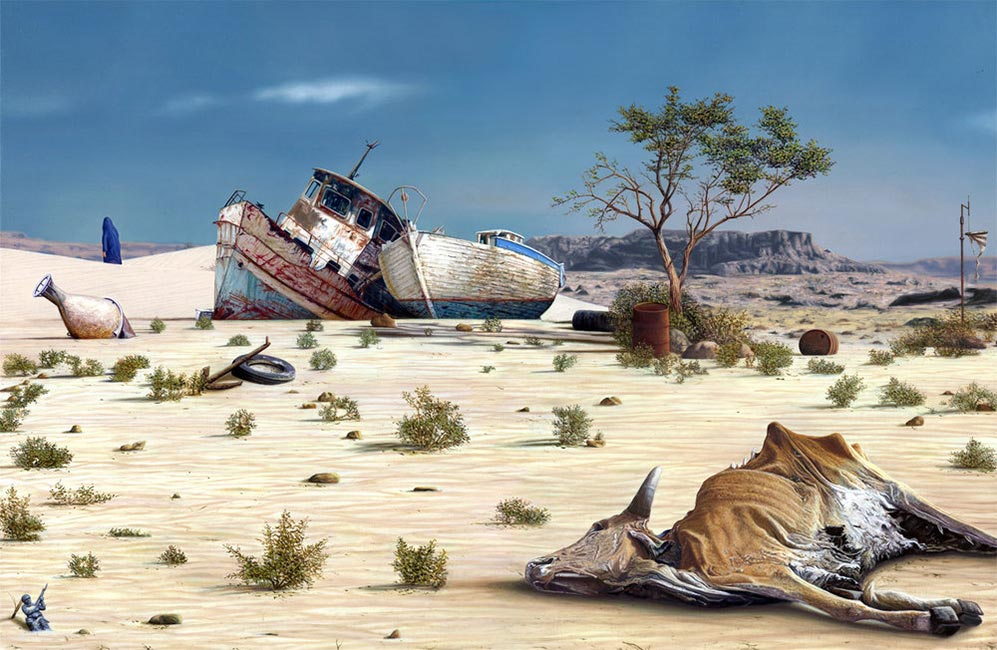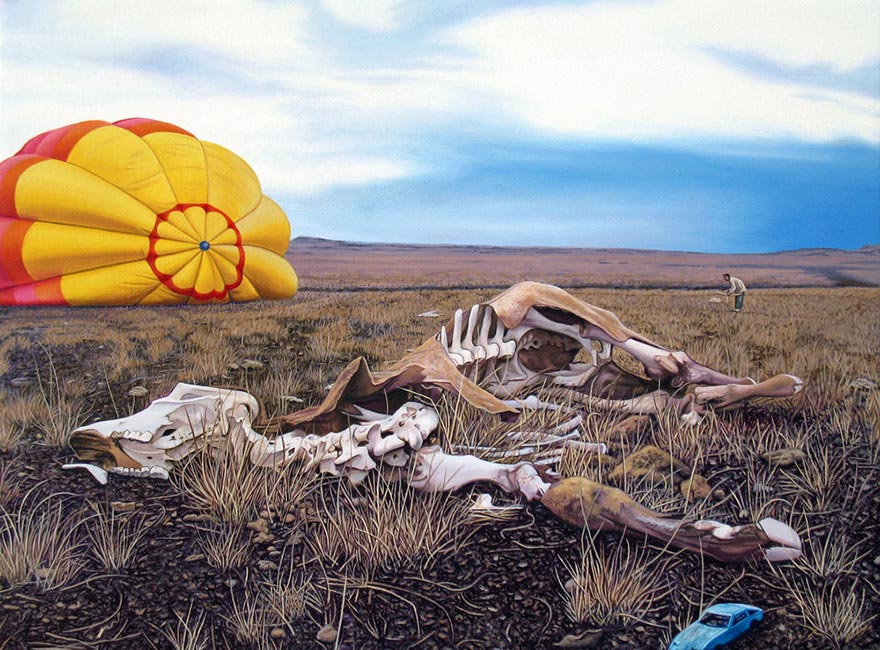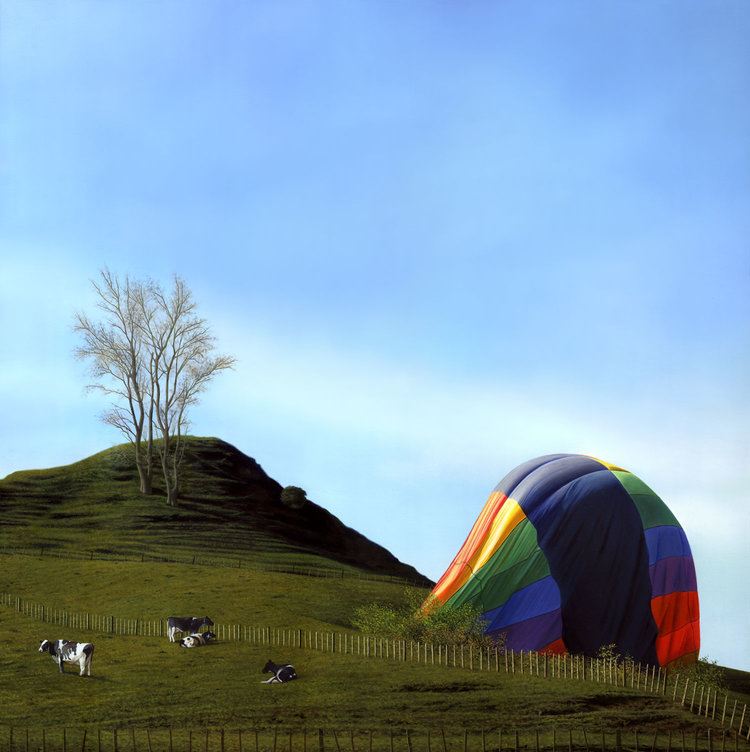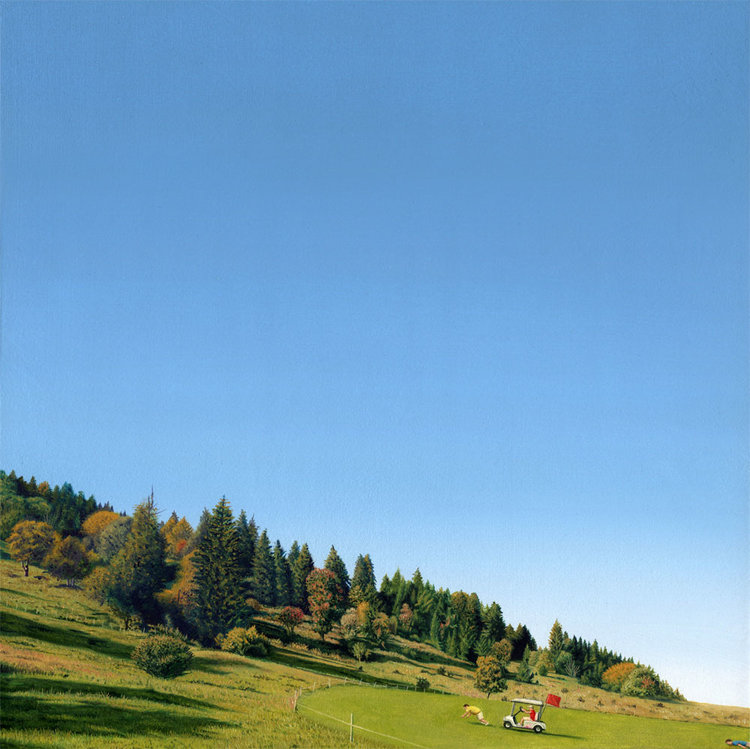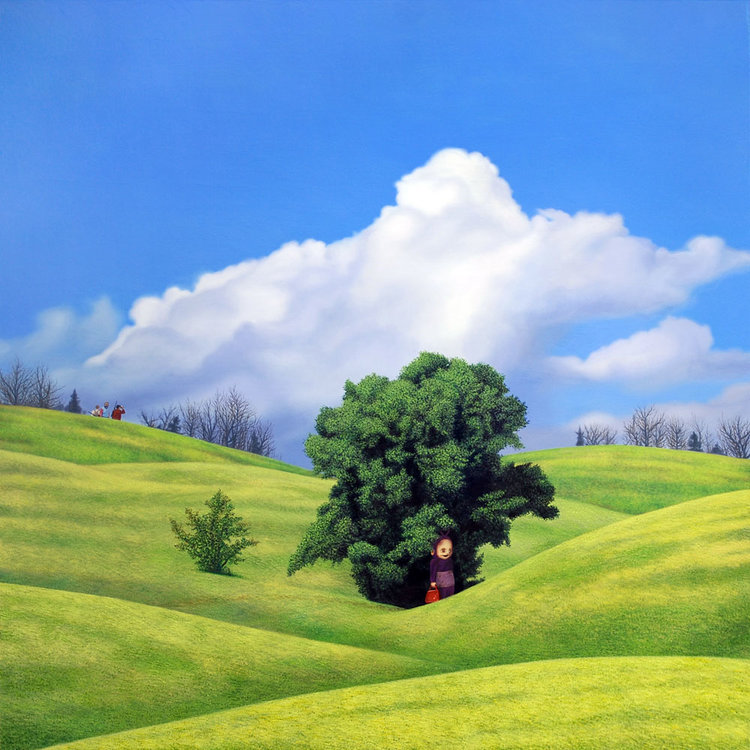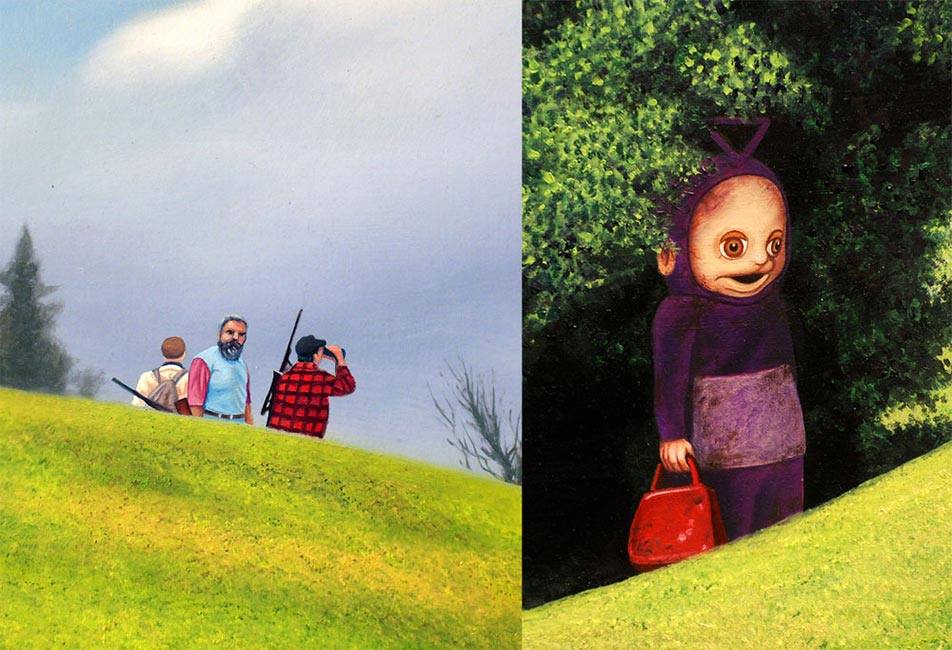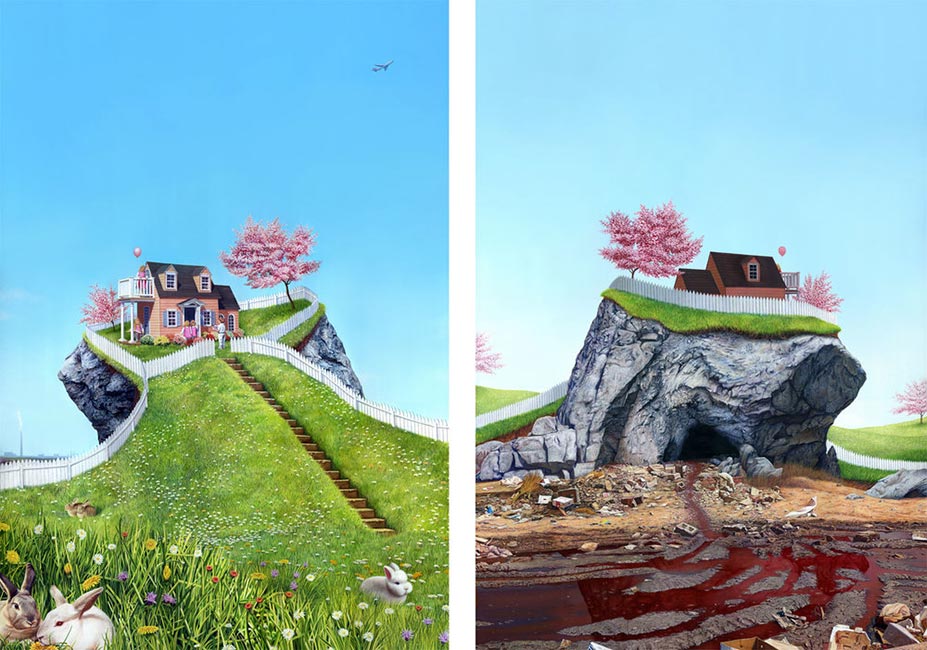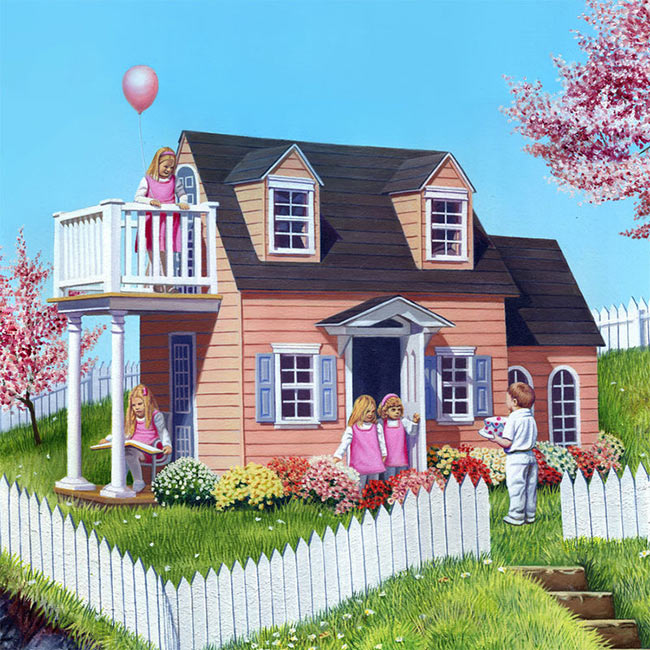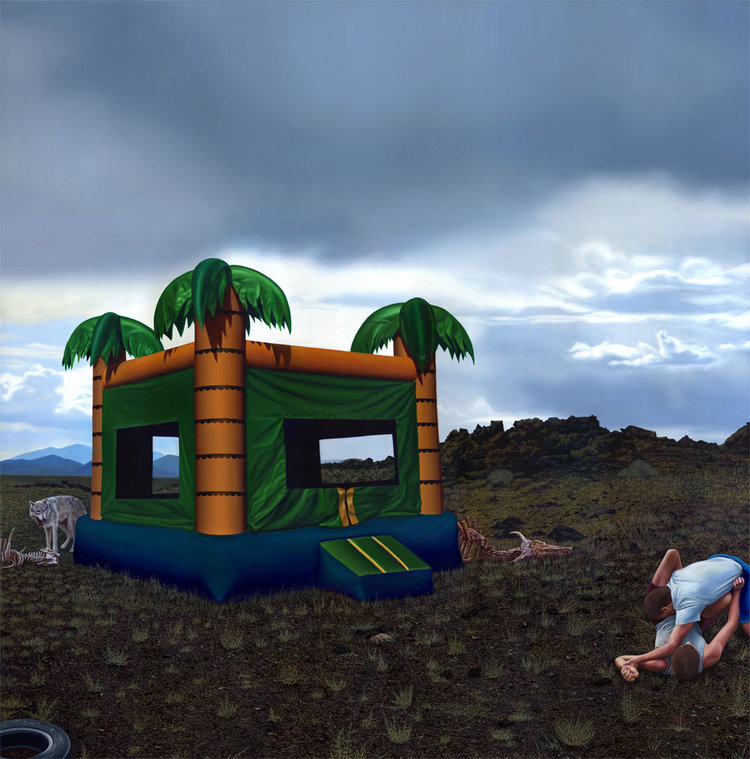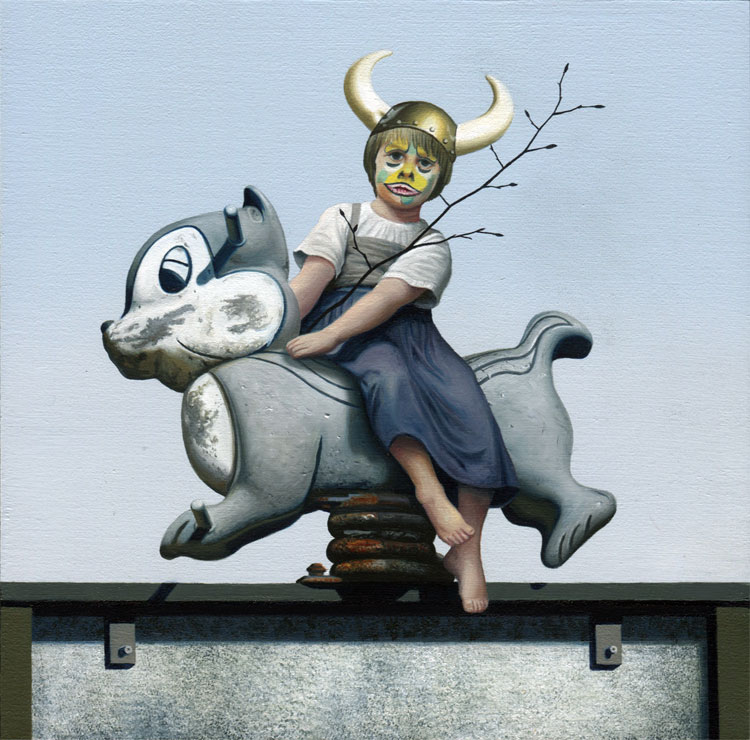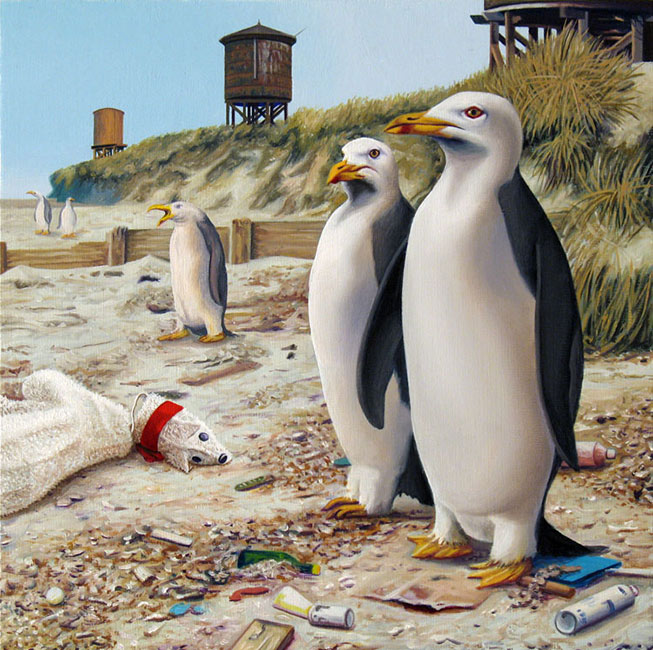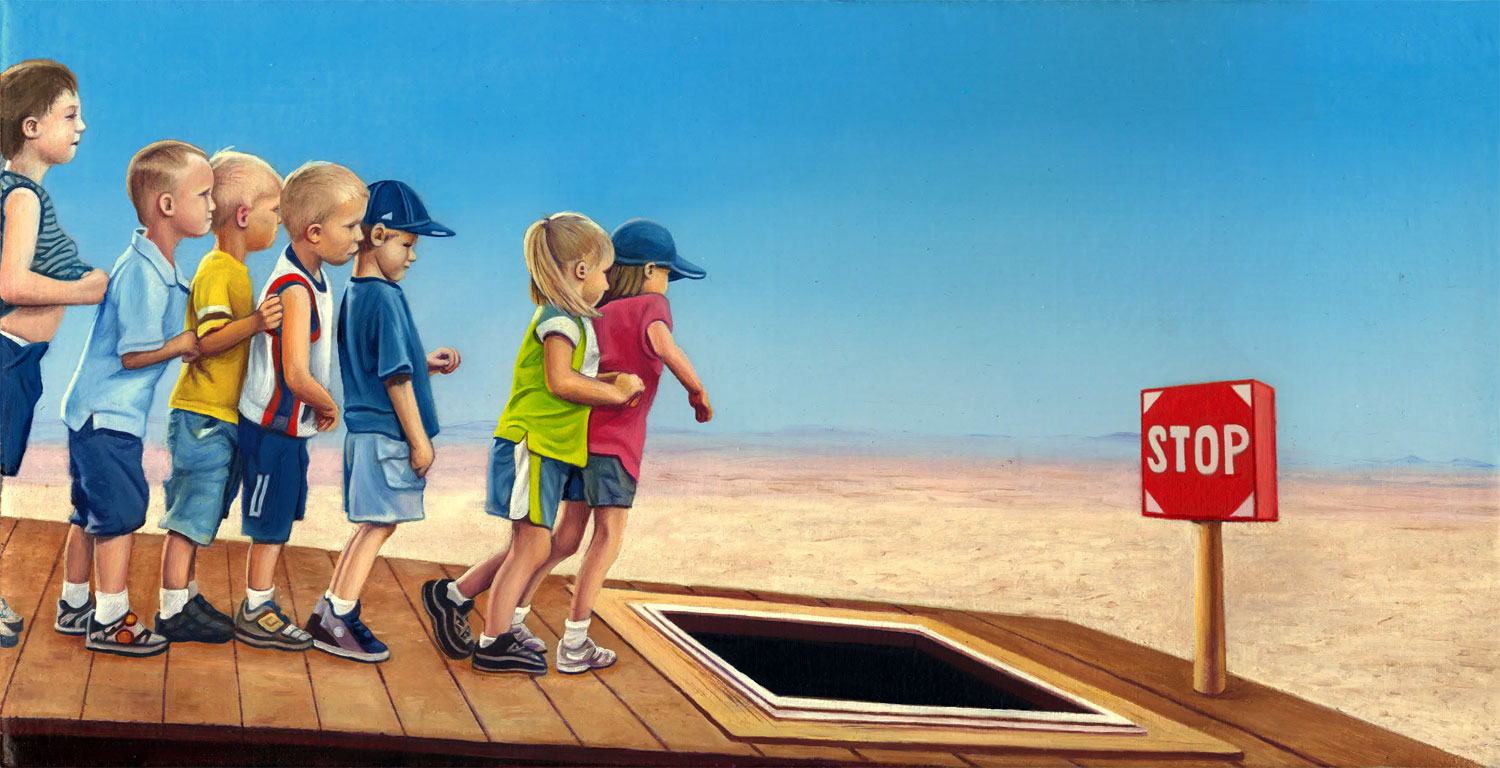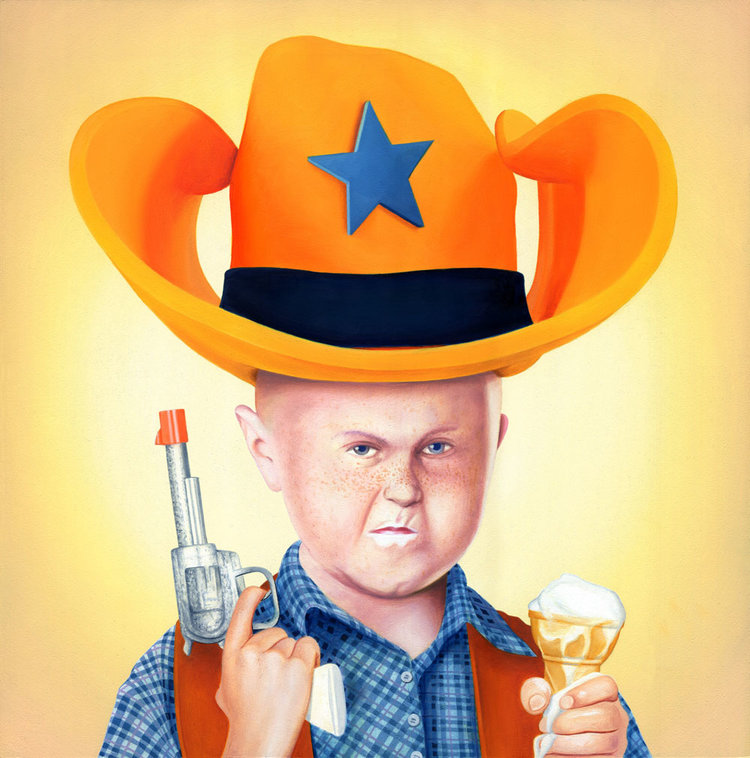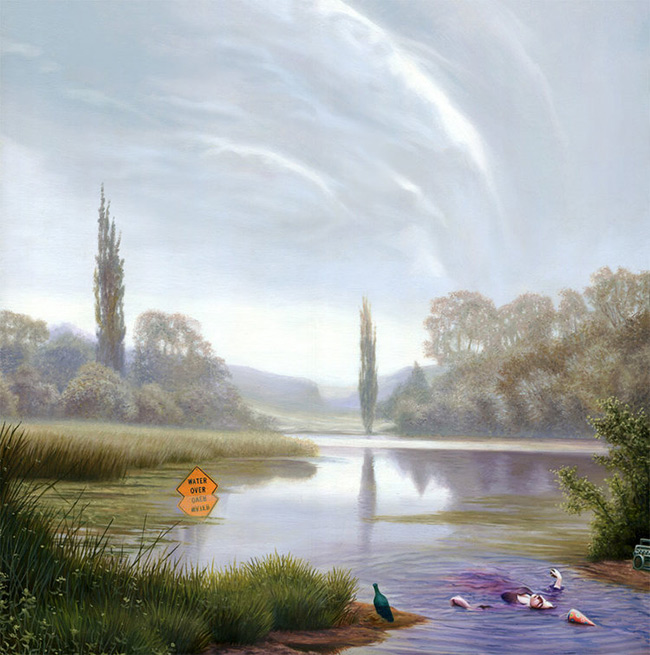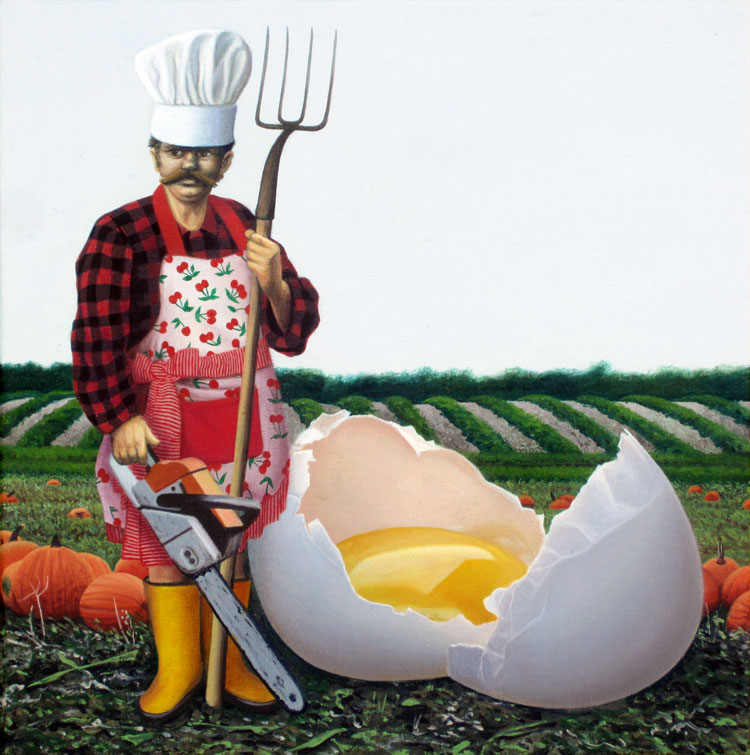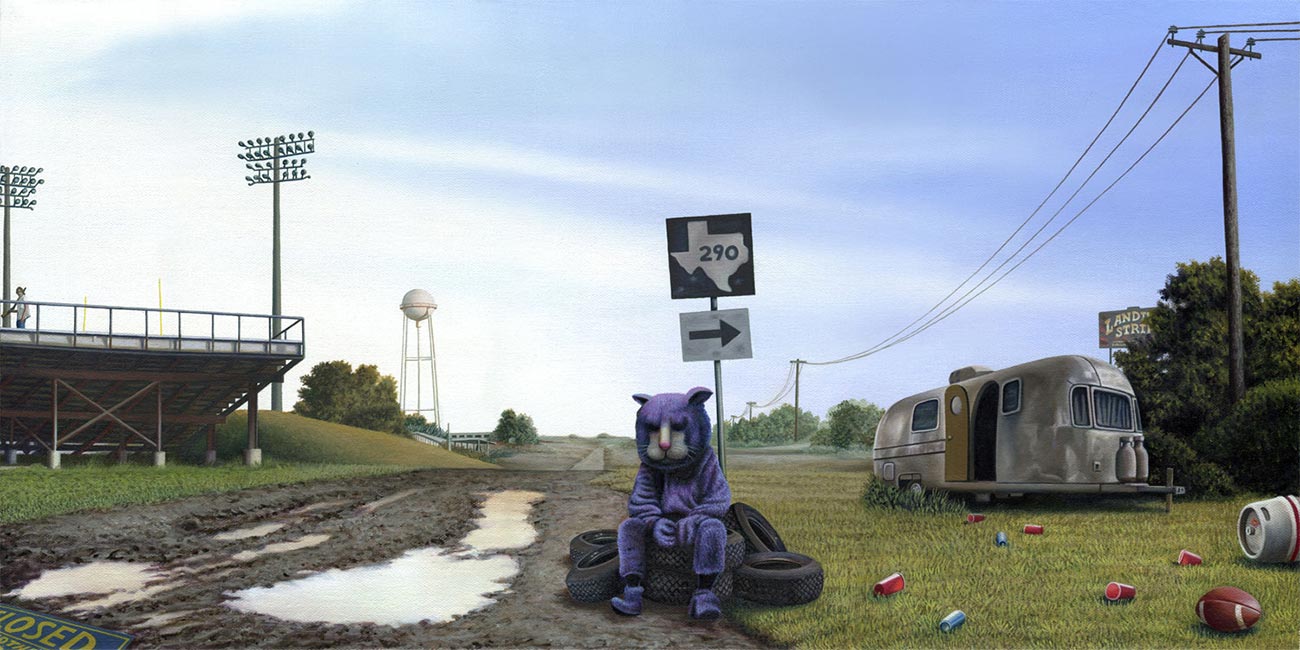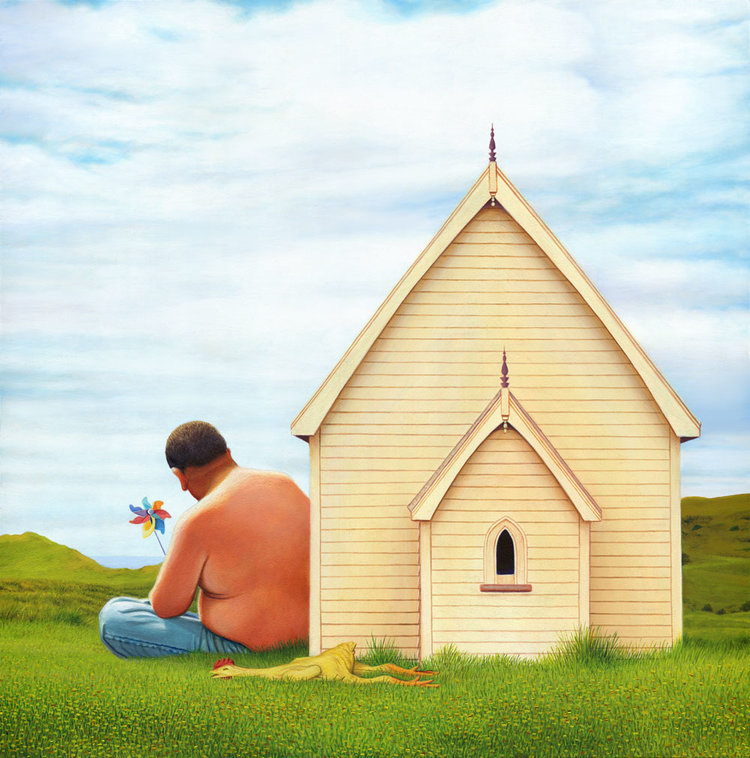With a scope that is broad and far-reaching, the paintings of Dan Lydersen incorporate his multi-faceted worldview to tremendous effect and deliver open-ended narratives which create a wealth of opportunity for free interpretation. Lydersen’s imagery is infused with the familiarity of everyday life, while simultaneously peeling back reality’s layers to reveal a myriad of underlying mysterious and otherworldly qualities within the ordinary. Dan’s sources of inspiration are as all-encompassing as his subject matter and he crosses the terrains of high and lowbrow, historical and contemporary eras, reality and fiction; exploring notions of the present, alongside the enigmatic and unanswered existential aspects of our mortality and their relationships with society’s eternally blinkered quest for progress, as we march blindly into an uncertain future.
Dan Lydersen was born in 1980 in Denver, Colorado and currently lives and works in Sacramento, California. He received a BA in Art with an emphasis in Painting and Drawing from the University of California, Santa Cruz in 2002. He then went on to earn a MFA in Painting at the San Francisco Art Institute in 2007. Dan is currently represented by the Jack Fischer Gallery in San Francisco and also regularly exhibits his work on the international New Contemporary circuit.
WOW x WOW is currently exhibiting a recent painting by Dan, entitled ‘Big Man’ as part of our ‘Lightning Bolts & Little Sparks’ show. In honour of this special occasion Dan graciously agreed to answer a few questions that we put together for him, so please enjoy learning more about his creative thoughts and fascinating work in the following exclusive interview.
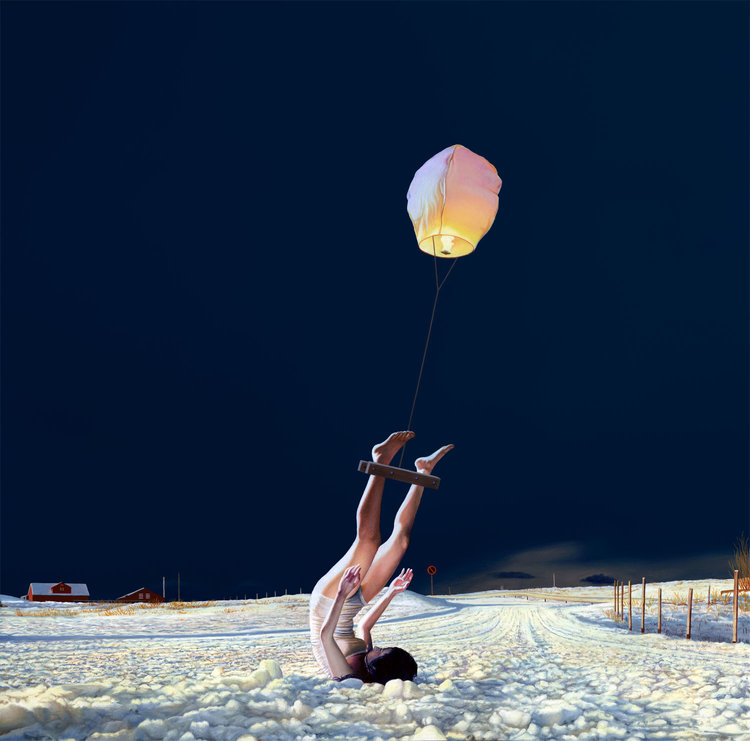
Hi Dan, thanks very much for making the time to have a chat, we really appreciate it. To get us started, can you give us some background on what has lead you to this point in your professional life, be it your formal training, hard work, serendipity, etc.?
I took the whole academic route. Majored in art in college then went to grad school for an MFA. But I think formal training is overrated. It can be helpful for developing critical thinking but when it comes down to actually making things, nothing but hard work and persistence will get you anywhere. Of course luck is a factor too. I just focus on making art that’s interesting to me, and fortunately a number of curators and collectors have found it interesting too.
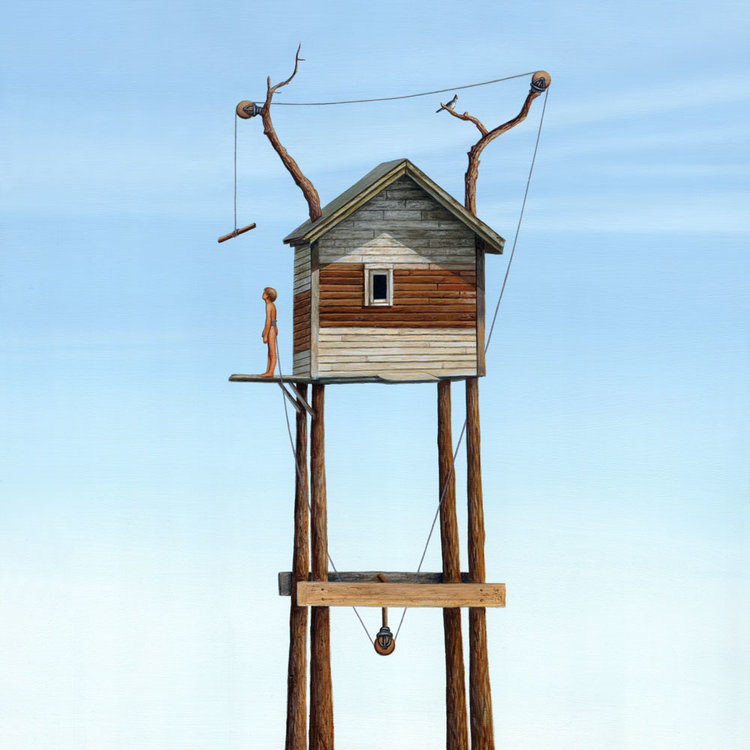
We’re interested to hear about where you’re currently living and what you like about the area? What is the art scene like there and do you feel a part of that community? Are these aspects of your life that are important to your creativity?
I live in Sacramento, California. Like anywhere it’s got its ups and downs. From my perspective, the art scene here is vibrant but small. I think its proximity to the Bay Area keeps it in sort of a cultural shadow. I suspect that might change as San Francisco and Oakland become too expensive for artists to live in, causing them to relocate to smaller cities like Sacramento. I moved here three years ago and haven’t really gotten involved with the art scene yet. I’m more involved with theatre. There’s a great theatre company here called Capital Stage where I’ve done some scenic art, mural work, and other things. I grew up around theatre so it’s been fun to go back to my roots. Collaboration is ultimately more fulfilling than solitary studio work.
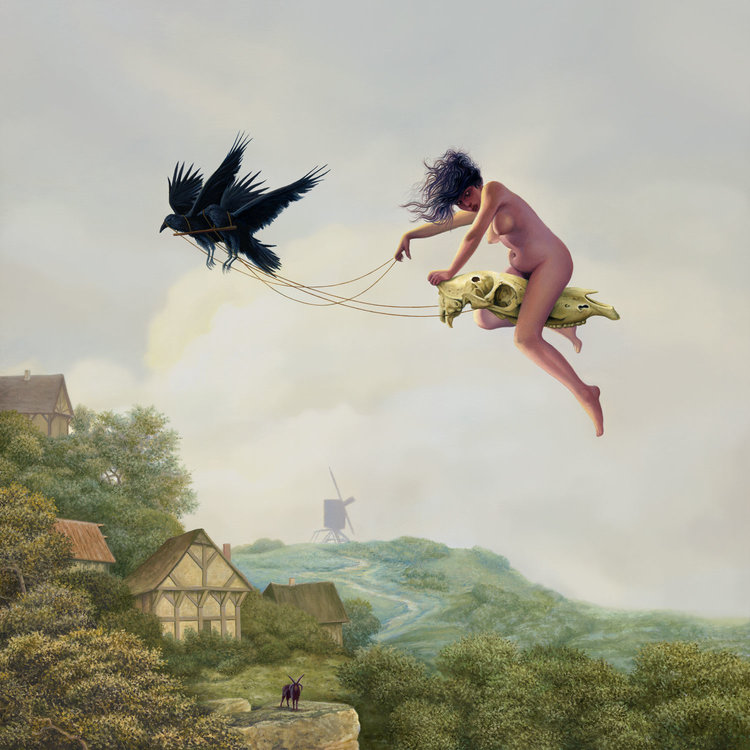
How do you approach the creative process? Talk us through how you construct an image. Do have a concrete idea of what it will look like before you get started? What types of reference do you use?
I’m all about imposing limitations on myself. I keep a long list of strategies, suggestions, and miscellaneous ideas that I’ll often refer to before I start a painting. It’s kind of like Brian Eno’s Oblique Strategies but specifically oriented towards visual art. Usually I’ll just pick something from the list at random and use it as a jumping off point. Sometimes an image will just pop into my head and I’ll set out to paint it but usually my work consists of careful, calculated planning. My paintings are so time-consuming to make, I really need to be sure of what I’m getting into so that I don’t end up changing my mind halfway through and throwing days or weeks of work down the drain. So I do a lot of sketching and editing before I start a painting and I have a pretty concrete idea of what I want it to look like before I begin.
References are definitely important since a lot of my work is either commentary on existing visual culture or a regurgitation of visual culture as an attempt to see things in a new light. I don’t put a premium on any particular type of reference. Whether it’s a Caravaggio painting or an advertisement for a hot dog, it’s all equal fodder for me.
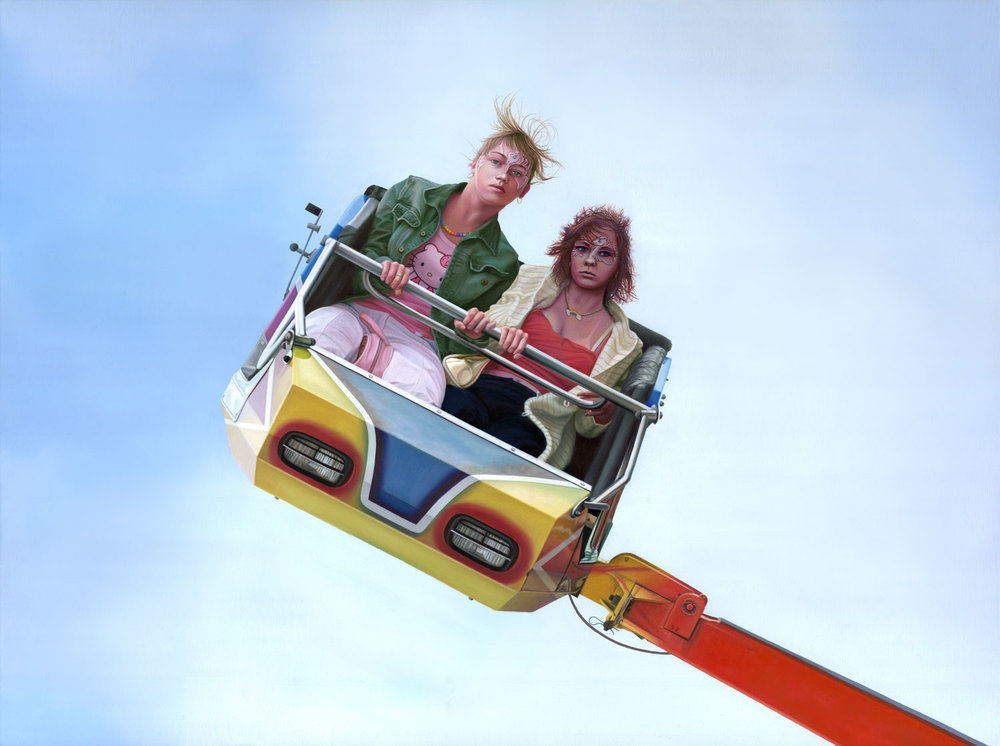
Over the years, your work has explored the nature of duality; a focus which stems from attempts to find balance between opposites; beauty and ugliness, tragedy and comedy, rationality and uncertainty. In what ways has your approach to this aspect of your subject matter evolved over time? What is it about opposites such as these that you find most intriguing and what has been the biggest reward for your explorations into this kind of thematic content?
Well, it’s like I said about Caravaggio and hot dogs. To me, anything is worth painting. I try not to attach value to things like beauty and ugliness. They’re pretty slippery concepts actually. One can easily become the other, depending on who’s looking and in what context. That’s what I find interesting. But my approach to the beautiful/ugly dichotomy isn’t really that conscious when I’m making a painting. It’s more a natural extension of my particular worldview.
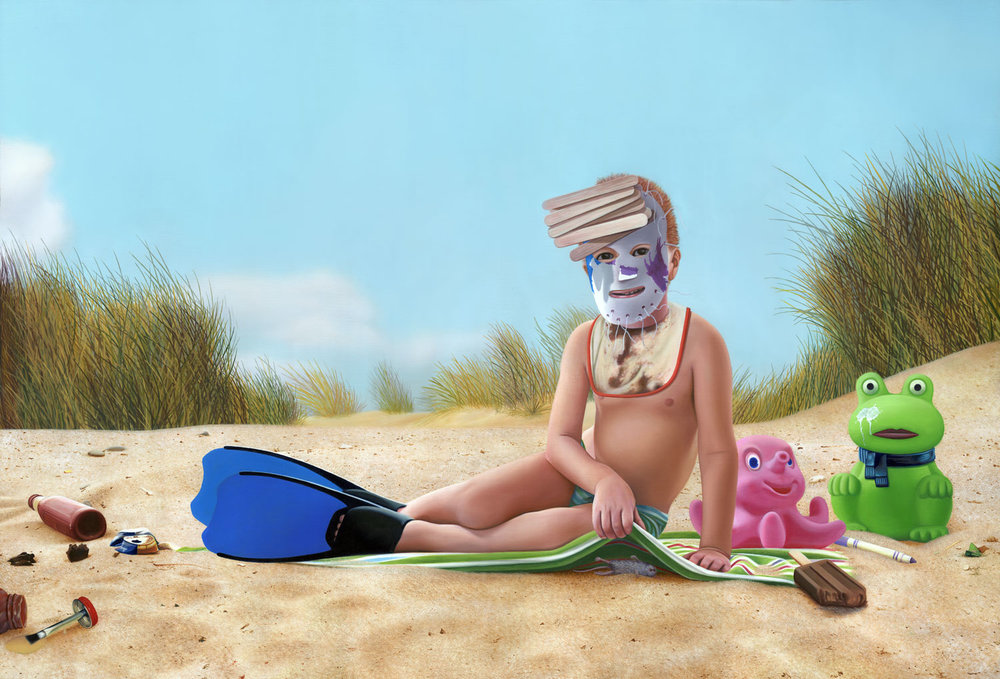
Take Thomas Kinkade for example. Some people love his paintings and others love to hate them. I find them fascinating, but not because I think they’re beautiful. I think they’re a horrifying psychedelic nightmare vision into the migraine aura of the American id. But not in a bad way. Though definitely not in a good way either…
See what I mean?
I just think life is more interesting when you choose to view things as complex and multifaceted. Even something as dumb as a Thomas Kinkade painting.
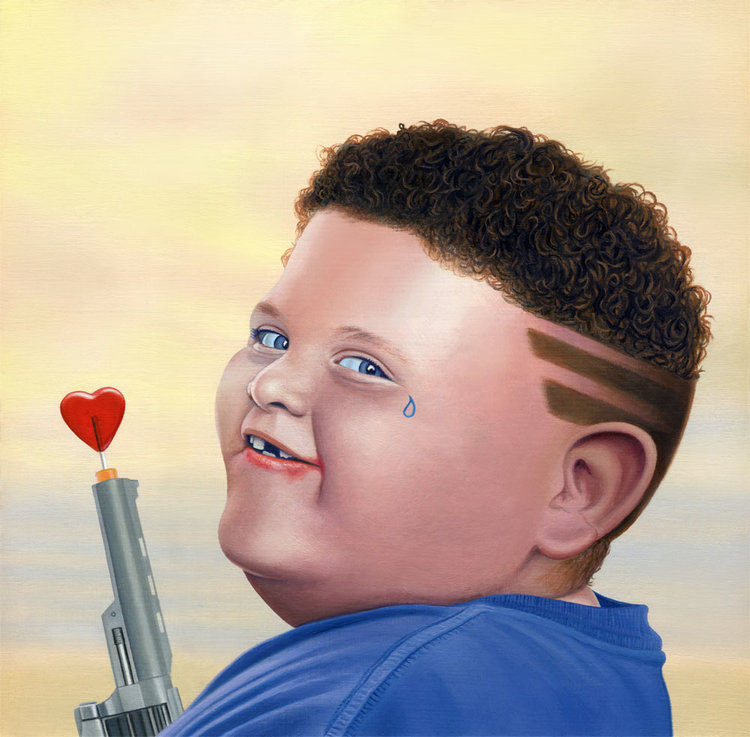
Who or what have been some of the strongest influences on your visual aesthetic and why?
One of my professors in grad school once said, “Never tell people who your influences are. If you say ‘I’m influenced by Gerhard Richter’ people will think snidely, ‘Huh. Well you’re no Gerhard Richter’”. For the record, she wasn’t addressing me when she said that, though I do like Gerhard Richter quite a bit.
Honestly, I don’t really know where my style comes from. I actually try not to have a style, even though I know that’s impossible. I try to paint descriptively and impartially. I guess in some ways I’m influenced by painters from the Northern Renaissance in that I tend to paint every blade of grass and every leaf on a tree. Like I said, descriptive. Mild OCD is probably the strongest influence on my visual aesthetic. I’m also very fond of Hieronymus Bosch and I think Tom Waits and Kathleen Brennan paint incredible pictures that you can only see in your mind. All of those people have influenced the tone of my work if not the style. Also, Robert Burden is an amazing painter who always inspires me to up my game.
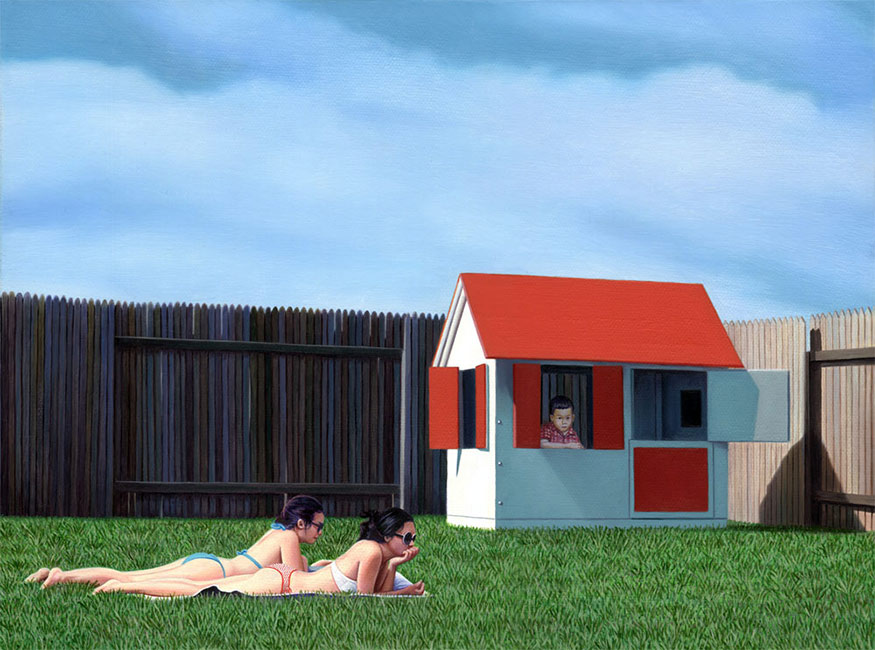
Have there been any occasions where you haven’t always necessarily had a full understanding of the symbols or dialogue that emerge from the narratives within your art? Could you give us an example of an image you painted that ended up revealing something to you after its completion?
Those kinds of revelations don’t really occur with individual paintings, more so with my work as a whole. I work pretty intuitively and try not to analyze what I’m doing as long as the choices I’m making feel right. Later on, usually when I’m asked to write about my work, certain things will become clearer to me. Since you asked about duality, I’ll use that as an example. If you look at my work from the past 10 years you can see that it’s a common thread throughout, but I wasn’t always aware of it being there. As you amass a larger body of work you start to notice certain trends, which can shed light on certain interests and preoccupations you have that were previously subconscious. The more that happens, the more you understand your work as a whole. Of course some things remain unexplained, which is good. You should have a little bit of mystery.
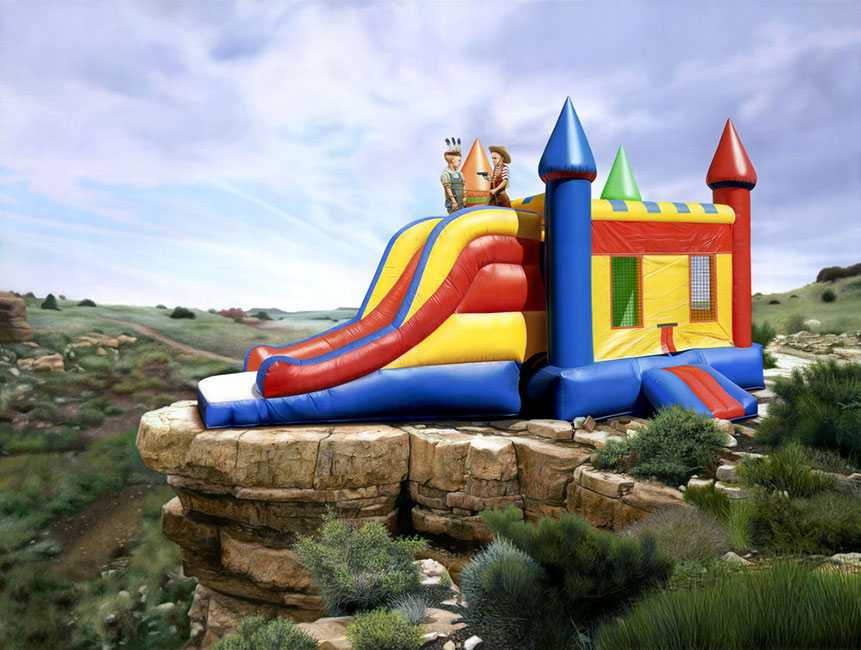
How personal or autobiographical do you allow yourself to get while creating? When you look back at certain pieces or larger collections of your own works, do they remind you of certain events or eras in your life?
It’s impossible to not let your opinions and your worldview influence your work, and that’s the way it should be. My work is very much a portrayal of how I see the world. That being said, it’s not meant to be about me at all. I do occasionally appear in my paintings, but that’s just because I’m easier to work with than a model. None of my paintings are direct reflections of things that happened in my life, but looking back they do all remind me of the times in my life in which they were painted.
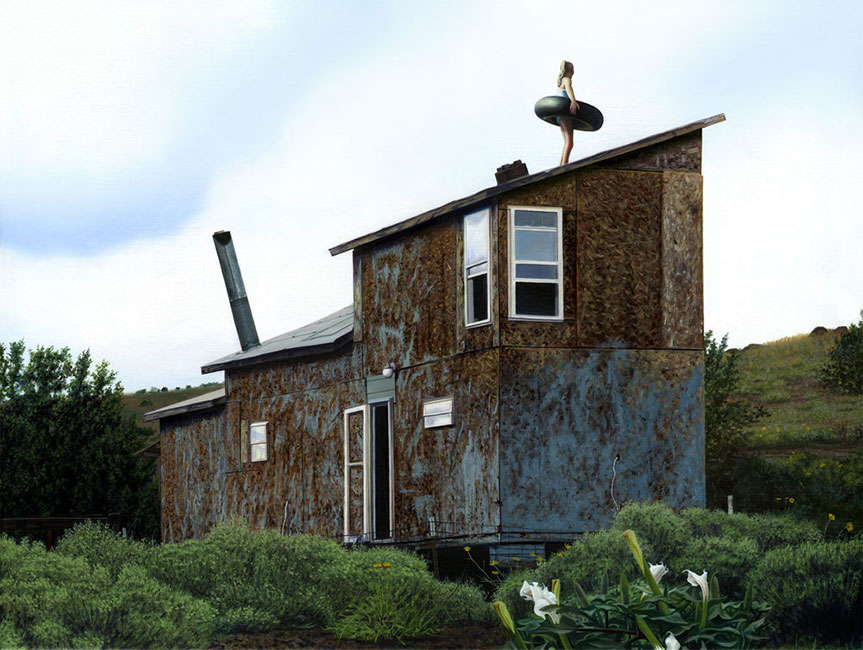
What has been the most exciting life and impact you have you witnessed any of your art take on once it left confines of your studio? What kind of feelings do you have about letting your creations go and live their own lives in the big wide world?
One exciting thing that happened early on was when Rene Di Rosa bought one of my paintings. He’s a legend in the Bay Area art scene and has an amazing collection housed at the Di Rosa preserve in Napa. It’s considered to be the largest and most significant collection of Bay Area art in the world so I feel honored to be a part of it.
But the best experience I’ve had with seeing my art go out into the world wasn’t related to painting. Last year I made an animation for a play at Capital Stage called Blackberry Winter, by Steve Yockey. It’s a story about a woman dealing with her mother’s worsening Alzheimer’s but woven throughout the play is a fantastical tale of an Egret who collects the memories of all the animals in a forest and buries them underground for safekeeping. But then a mole finds them and disaster ensues. That’s what I animated. It was projected onto a large backdrop while the actors on stage narrated the story, accompanied by an original score. It was really gratifying to see it all come together and to be able to sit in the theatre and watch the audience respond in real time. You don’t get that so much with painting.
As for letting go of paintings, it makes me happy. Every sale is a vote of confidence in what I do and buys me more time to keep creating. I make these paintings for an audience so I’m glad they’re receiving one. It would be kind of sad if they were all just sitting here in my studio.
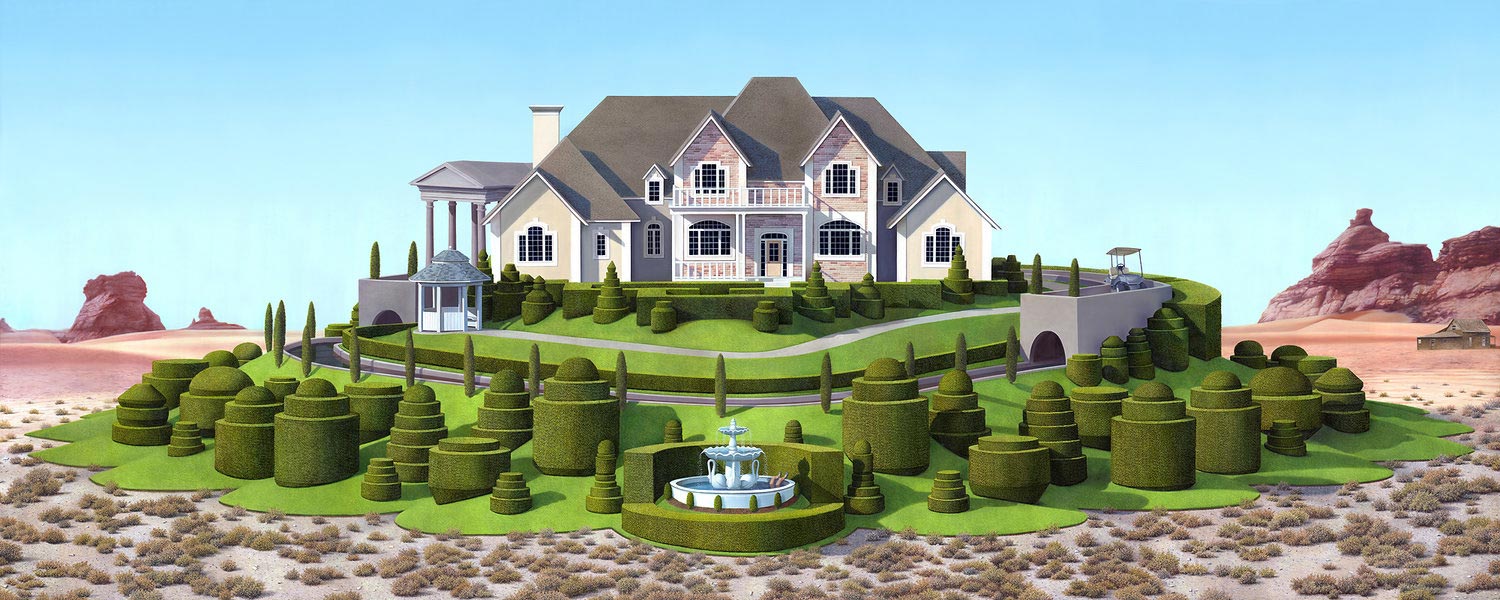
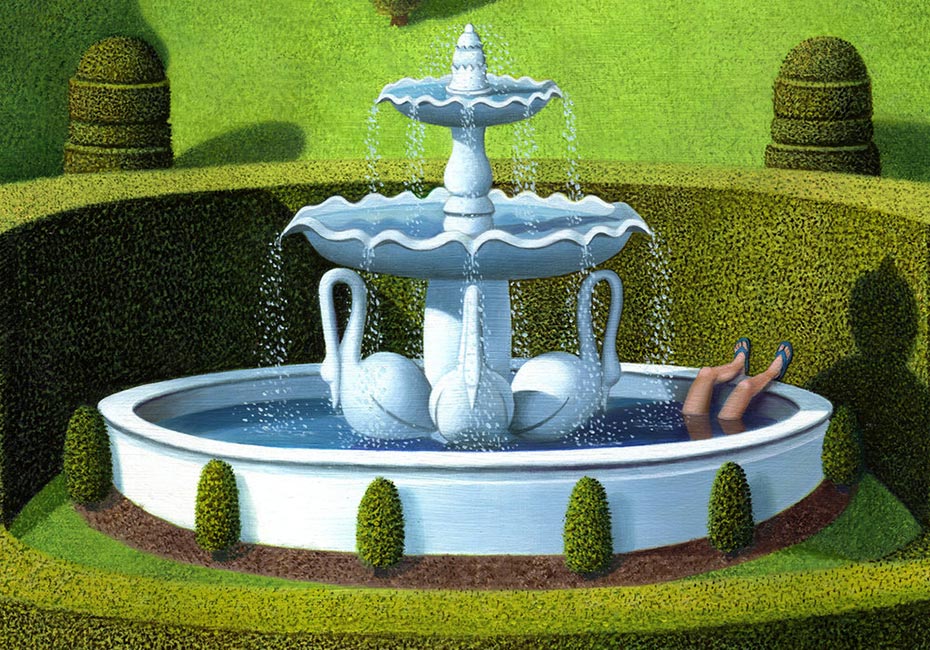
What do you believe your role is as a contemporary artist?
I don’t perceive myself as having a particular role. I just feel compelled to make things and I’m happy that people are interested in what I’m doing. I don’t see it as a noble profession or anything.
In order to get a better understanding of the personality of an artist, it can help to get a peek behind the curtain. Would you be willing to share a story from your own life, possibly one who’s memory you find yourself returning to for inspiration, or maybe just a tale about a hardship you’ve overcome which has helped define the person and therefore artist that you are now?
There’s so much pain and suffering in the world, any of the hardships I’ve encountered seem insignificant compared to what some people experience on a daily basis. Of course everyone’s problems are their own. Life is hard. But you have to look at where the cosmic roulette wheel landed for you and try to judge your wins and losses relative to all other possibilities.
As for inspiration, how about this: Several years back I was riding my bike along an old country road next to a creek. I looked up and saw an old busted washing machine high up in a tree. The late afternoon sun was casting a golden glow over everything, making all the gnats flitting about look like daytime fireflies. It was like a dream. I got off my bike and scratched my head over how someone could’ve gotten that appliance so high up in that tree. And why? I think about that a lot.
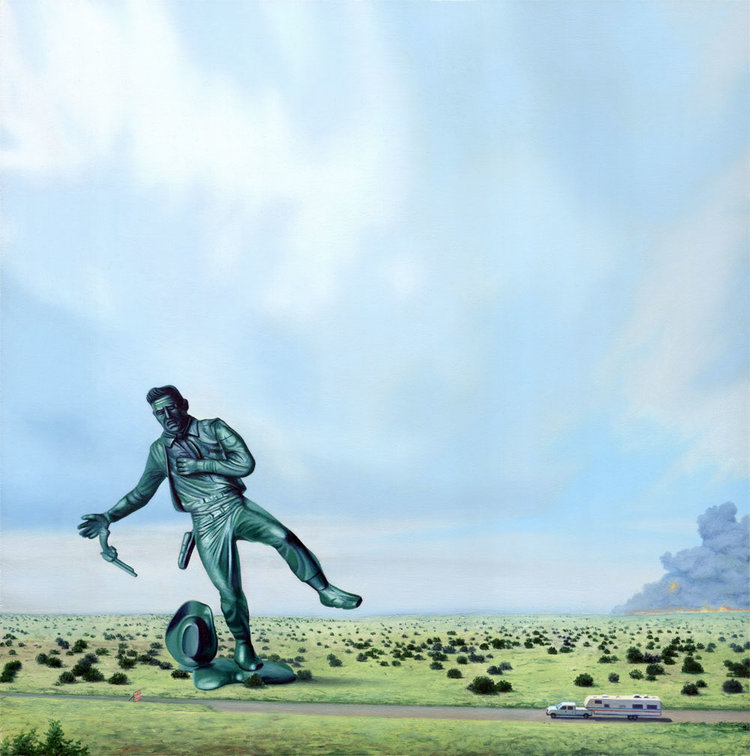
If you could own one piece of art from any of the world’s collections what would it be and why?
‘Dulle Griet’ by Pieter Bruegel. A bunch of women beating the shit out of demons at the gates of hell. What’s better than that? I’d always been a fan but I had the opportunity to see it in person last year in Antwerp. The pictures you’ll find on the internet don’t do it justice. It’s amazing. I’d give it to my wife for her birthday. It’s her favorite.
What’s next for Dan Lydersen?
I’ll be unveiling a bunch of new paintings in my next solo show opening August 5th at Jack Fischer Gallery in San Francisco.
I also have paintings in some upcoming group shows:
Flourish at the Mesa Contemporary Arts Museum in Mesa, Arizona, May 12 – August 12.
LAX / DTW: Detroit Hustle II, curated by Thinkspace Gallery at Inner State Gallery in Detroit, June 30 – July 21.
Play at the Palo Alto Art Center, Sept. 15 – Dec. 30.
And of course Lightning Bolts and Little Sparks at wowxwow.com, June 2 – 30.
